《the chemistry of the actinide elements P508》
| 作者 | 编者 |
|---|---|
| 出版 | 未查询到或未知 |
| 参考页数 | |
| 出版时间 | 没有确切时间的资料 目录预览 |
| ISBN号 | 无 — 求助条款 |
| PDF编号 | 820557578(仅供预览,未存储实际文件) |
| 求助格式 | 扫描PDF(若分多册发行,每次仅能受理1册) |
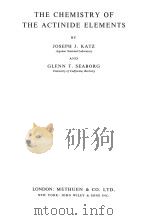
Ⅰ.INTRODUCTION1
Ⅱ.ACTINIUM5
1.Historical5
2.Isotopes5
3.Occurrence in Nature6
4.Preparation and Isolation7
4.1.Solvent extraction of thenoyltrifluoroacetone complex of actinium7
4.2.Isolation of actinium by ion exchange9
4.3.Purification of actinium by oxalate precipitation11
5.Actinium Metal11
6.Emission and Absorption Spectra of Actinium11
7.Chemical Properties and Compounds of Actinium12
Ⅲ.THORIUM16
1.Historical16
2.Isotopes17
3.Occurrence in Nature18
4.Extraction of Thorium from Monazite20
4.1.Sulphuric acid process20
4.2.Caustic digestion process22
4.3.Solvent extraction of thorium22
4.4.Solvent extraction of chelate complexes of thorium24
4.5.Ion exchange behaviour of thorium25
5.Thorium Metal26
5.1.Preparation27
5.2.Physical properties of thorium metal30
5.3.Thorium alloys and intermetallic compounds31
5.4.Chemical properties of thorium and its alloys33
6.Compounds of Thorium34
6.1.Hydrides35
6.2.Oxide38
6.3.Borides,carbides,and silicides39
6.4.Nitrides and phosphides42
6.5.Sulphides,selenides,and tellurides42
6.6.Halides46
6.7.Volatile Compounds of Thorium51
7.Thorium in Solution52
7.1.Oxidation potential52
7.2.Hydrolysis of Th+452
7.3.Complex ion formation56
7.4.Chelate compounds of thorium59
7.5.Water soluble salts of thorium60
7.6.Insoluble salts of thorium63
Ⅳ.PROTACTINIUM67
1.Historical67
2.Isotopes of Protactinium67
3.Occurrence and Isolation of Protactinium69
3.1.Coprecipitation of protactinium69
3.2.Solvent extraction of protactinium71
3.3.Ion-exchange behaviour of protactinium78
3.4.Isolation of protactinium by the method of Katzin,et al.81
3.5.Isolation according to Golden and Maddock81
3.6.Isolation according to Elson,et al.83
3.7.Isolation according to the method of Ha?ssinsky and Bouissièrres83
3.8.Isolation according to the method of Salutsky,et al.83
3.9.Isolation by volatilizing according to Malm and Fried85
4.The Element Protactinium and its Compounds86
4.1.Protactinium metal and hydride87
4.2.Protactinium oxides88
4.3.Protactinium halides88
4.4.Miscellaneous compounds89
5.Protactinium in Solution90
5.1.The lower oxidation state of protactinium in solution91
5.2.Absorption spectra of protactinium solutions93
Ⅴ.URANIUM94
1.Historical94
2.Isotopes95
3.Uranium in Nature96
3.1.Minerals98
Pitchblende99
Autunite99
Thucholite101
3.2.Economic deposits102
3.3.Important uranium reserves104
4.Extraction of Uranium106
4.1.Preconcentration107
4.2.Roasting and calcining108
4.3.Leaching or digestion109
Acid leaching109
Alkaline leaching111
4.4.Recovery of uranium from leach solutions113
Clarification114
Chemical precipitation114
Ion exchange116
Resin-in-pulp117
Solvent extraction117
Volatility procedures119
5.Uranium Metal120
5.1.Preparation121
5.2.Physical properties of uranium metal123
Crystal structure of metallic uranium125
Thermodynamic properties of uranium127
Magnetic susceptibility128
Electrical properties128
5.3.Uranium intermetallic compounds and alloys128
5.4.Chemical properties of uranium and its alloys131
5.5.Irradiation effects on uranium and its alloys132
6.Uranium Hydride,Deuteride,and Tritide133
6.1.Preparation and composition133
6.2.Physical properties.Dissociation pressure134
Thermodynamic relationships136
Crystal structure136
Magnetic properties137
6.3.Chemical properties of uranium hydride137
7.Uranium-oxygen System138
7.1.Nonstoichiometric systems139
7.2.Stoichiometric uranium oxides141
7.3.Phase relationships143
U-UO2.00143
UO2.00-UO2.25143
UO2.25-U3O8-x144
U3O8-x-U3O8144
7.4.Binary and tertiary oxide systems144
7.5.Uranates,polyuranates,and peruranates145
7.6.Preparation and chemical properties of uranium oxide145
8.Uranium Carbides,Borides,and Related Compounds148
8.1.Uranium-carbon system148
8.2.Uranium-boron system149
8.3.Uranium-nitrogen system151
8.4.Uranium-silicon system152
8.5.Uranium-sulphur,selenium,and tellurium systems152
9.Uranium Halides and Related Compounds153
9.1.Uranium fluorides153
Uranium trifluoride153
Uranium tetrafluoride153
Intermediate fluorides156
Uranium hexafluoride156
9.2.Uranium chlorides,bromides,and iodides161
Preparation161
Properties164
Volatility165
9.3.Uranium chelate compounds with 1,3 diketones166
9.4.Uranium alkoxides167
9.5.π-Cyclopentadienyl compounds of U(Ⅳ)170
9.6.Uranium(Ⅳ)borohydride170
9.7.Uranium(Ⅳ)amides and mercaptides171
10.Uranium Ions in Solution171
10.1.Hydrolytic behaviour of uranium ions172
Tripositive uranium,U+3174
Tetrapositive uranium,U+4175
Pentapositive uranium,UO?176
Hexapositive uranium,UO?+177
Hydrolytic reactions of UO?+178
10.2.Oxidation-reduction relationships179
Disproportionation reaction of UO+2180
Kinetics of oxidation-reduction reactions181
10.3.Complex ion formation183
Tetrapositive uranium183
Hexapositive uranium185
10.4.Important uranium salts191
10.5.Uranium in nonaqueous solvents194
Ⅵ.NEPTUNIUM204
1.Historical204
2.Isotopes205
3.Neptunium in Nature206
4.Preparation and Isolation of Neptunium206
4.1.Lanthanum fluoride oxidation-reduction cycle208
4.2.Solvent extraction of neptunium209
4.3.Extraction of neptunium as the thenoyltrifluoroacetone complex210
4.4.Ion exchange210
4.5.Volatility211
5.Neptunium Metal211
6.Neptunium Compounds213
6.1.X-ray crystal structure data214
6.2.Hydride214
6.3.Oxides and sulphides214
Neptunium dioxide216
Higher oxides216
Sulphides217
6.4.Carbides and silicides217
6.5.Nitride and phosphide217
6.6.Neptunium fluorides217
6.7.Neptunium chlorides,bromides,and iodide218
6.8.Neptunium compounds prepared from aqueous solution220
7.Neptunium Ions in Solution220
7.1.Oxidation potentials223
7.2.Hydrolytic reactions of neptunium ions225
7.3.Complex ions of neptunium226
7.4.Kinetics of oxidation-reduction and isotope exchange reactions of neptunium ions229
Disproportionation reactions229
Oxidation-reduction reactions of neptunium ions231
Kinetics of the oxidation of Np(Ⅳ)by Fe(Ⅲ)231
Kinetics of the Np(Ⅳ)-Np(Ⅵ)reaction233
The Np(Ⅳ)-Np(Ⅴ)isotope exchange234
The Np(Ⅴ)-Np(Ⅵ)isotope exchange236
Ⅶ.PLUTONIUM239
1.Historical239
2.Isotopes240
3.Plutonium in Nature241
4.Preparation and Purification of Plutonium244
4.1.Coprecipitation procedures247
Lanthanum fluoride cycle247
Bismuth phosphate cycle249
Bismuth phosphate process250
4.2.Solvent extraction procedures252
The Redox process254
Purex(TBP)process256
Chelation processes257
Solvent extraction by molten metals262
4.3.Ion exchange separations262
5.Plutonium Metal and Intermetallic Compounds264
5.1.Allotropic modifications,phase transformations,crystal structures and densities265
5.2.Linear expansion,electrical resistivity,and magnetic properties of plutonium metal268
5.3.Vapour pressure of liquid plutonium270
5.4.Chemical properties of plutonium270
5.5.Plutonium alloys and intermetallic compounds271
6.Compounds of Plutonium272
6.1.Plutonium hydrides and deuterides274
6.2.Plutonium carbides and silicides276
6.3.Plutonium nitride,phosphide,and arsenide277
6.4.Plutonium oxides,sulphides,and telluride278
6.5.Plutonium halides and oxyhalides281
Plutonium fluorides283
Trihalides of plutonium285
6.6.Plutonium hexafluoride285
Preparation286
Melting point,boiling point,and crystal structure286
Vapour pressure and related data286
Infra-red and visible absorption spectrum287
Magnetic susceptibility288
Radiation decomposition288
Chemical properties289
6.7.Plutonium compounds obtained from aqueous solution289
7.Plutonium Ions in Solution292
7.1.Absorption spectra of plutonium ions293
Fine structure of PuO?+ spectrum295
Infra-red spectrum of PuO?+296
Spectrophotometric analysis for oxidation states of plutonium297
7.2.Hydrolytic behaviour of plutonium ions297
Plutonium(Ⅲ)298
Plutonium(Ⅳ)299
Plutonium(Ⅳ)polymer300
Plutonium(Ⅴ)302
Plutonium(Ⅵ)303
7.3.Complex ions of plutonium304
Plutonium(Ⅲ)304
Plutonium(Ⅳ)305
Chloride ion305
Nitrate ion306
Fluoride ion306
Sulphate ion307
Oxalate ion308
Phosphate ion308
Hydrogen peroxide309
Other complexes310
Plutonium(Ⅴ)312
Plutonium(Ⅵ)313
Sulphate and carbonate313
7.4.Oxidation-reduction behaviour of the plutonium ions314
Oxidation potentials314
7.5.The plutonium(Ⅲ)-(Ⅳ)-(Ⅵ)equilibrium.The dispro-portionation of plutonium(Ⅳ)315
7.6.Disproportionation of plutonium(Ⅴ).The plutonium (Ⅲ)-(Ⅳ)-(Ⅴ)-(Ⅵ)equilibrium321
7.7.Alpha reduction of plutonium(Ⅵ)325
7.8.Oxidation-reduction reactions of plutonium ions325
Ⅷ.AMERICIUM331
1.Historical331
2.Isotopes of Americium332
3.Preparation and Purification of Americium 241333
3.1.Precipitation or carrying procedures334
3.2.Ion exchange335
3.3.Solvent extraction340
3.4.Solvent extraction of the thenoyltrifluoroacetone(TTA)complex of americium342
3.5.The isolation of americium according to Hall and Herniman343
3.6.Purification of americium according to Los Alamos345
3.7.Extraction and purification of americium according to Berkeley346
4.Americium Metal347
5.Solid Compounds of Americium349
5.1.Americium hydrides349
5.2.Americium-oxygen system349
Americium sulphide351
5.3.Americium halides351
Americium tetrafluoride353
Americium trichloride354
Americium tribromide354
5.4.Americium(Ⅴ)and(Ⅵ)compounds355
6.Ions in solution357
6.1.Oxidation potentials of americium ions357
6.2.Americium(Ⅱ)359
6.3.Americium(Ⅲ)359
6.4.Americium(Ⅳ)364
6.5.Americium(Ⅴ)364
Absorption spectrum365
The americium(Ⅴ)ion,AmO?366
Disproportionation of americium(Ⅴ)366
Auto-reduction of americium(Ⅴ)solutions368
6.6.Americium(Ⅵ)369
Absorption spectrum of americium(Ⅵ)370
The americyl ion,AmO?+370
Auto-reduction of americium(Ⅵ)371
Isotopic exchange reactions of americium ions371
Some chemical properties of the AmO?+ ion371
Ⅸ.CURIUM373
1.Historical373
2.Isotopes373
3.Preparation and Isolation of Curium375
3.1.Isolation of curium by ion exchange376
3.2.Isolation of curium by solvent extraction377
3.3.Isolation and purification of curium according to Feay and Cunningham378
4.Curium Metal379
5.Anhydrous Curium Compounds379
6.Curium in Aqueous Solution.Possible Higher Oxidation States381
7.Absorption Spectra of Curium383
8.Magnetic Susceptibility of Curium385
Ⅹ.THE TRANSCURIUM ELEMENTS386
1.General386
2.Separation and Identification of the Transcurium Elements by Ion Exchange386
3.Berkelium392
3.1.Isotopes of berkelium392
3.2.Isolation of Bk243393
3.3.Chemical properties of berkelium394
4.Californium397
4.1.Isotopes of californium397
4.2.Chemical properties of californium399
5.Einsteinium400
5.1.Isotopes of einsteinium400
5.2.Chemical properties of einsteinium401
6.Fermium402
7.Mendelevium404
8.Nobelium405
Ⅺ.SUMMARY AND CORRELATION OF PROPERTIES406
1.General Considerations406
Sources of transuranium isotopes407
Atomic weights of transuranium isotopes410
2.Summary of Chemical and Physical Properties.The Metallic State411
2.1.Oxidation states413
2.2.Oxidation-reduction relationships418
2.3.Hydrolysis and complex ion formation421
2.4.Solid compounds432
2.5.Thermodynamic data432
2.6.Adsorption-elution behaviour433
3.Crystal Structure437
4.Absorption and Fluorescence Spectra439
4.1.Ultraviolet and visible absorption and fluorescence spectra439
4.2.Infra-red measurements442
5.Electronic Configuration from Magnetic Data444
5.1.Magnetic susceptibility studies445
5.2.Paramagnetic resonance studies452
6.Spectroscopic Data456
7.Electronic Structure463
8.Position in Periodic Table470
9.Future Elements472
APPENDIX ⅠAtomic Weights of Actinide Nuclides476
APPENDIX ⅡX-ray Energies of the Actinide Elements477
APPENDIX ⅢNuclear Spins of Actinide Nuclides480
NAME INDEX481
SUBJECT INDEX489
A Chart of Colours of Actinide Ions417
《the chemistry of the actinide elements P508》由于是年代较久的资料都绝版了,几乎不可能购买到实物。如果大家为了学习确实需要,可向博主求助其电子版PDF文件。对合法合规的求助,我会当即受理并将下载地址发送给你。
高度相关资料
-
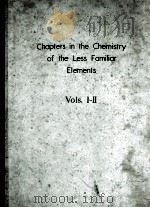
- CHAPTERS IN THE CHEMISTRY OF THE LESS FAMILIAR ELEMENTS CHAPTER 1
- 1939 STIPES PUBLISHING GO
-

- The ELEMENTS of DRAWING & the ELEMENTS of PERSPECTIVE
- 1920 LONDON & TORONTO PUBLISHED BY JD DENT & SONS LTP & IN NEW YORK BY E.P.DUTTON & CO
-
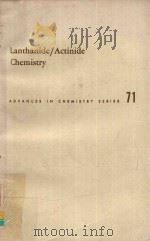
- LANTHANIDE/ACTINIDE CHEMISTRY
- 1967 AMERICAN CHEMICAL SOCIETY
-
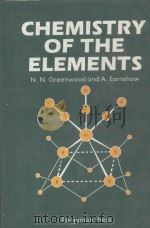
- Chemistry of the elements
- 1984 Pergamon Press
-

- ANALYTICAL CHEMISTRY OF THE ELEMENTS NIBIUM TANTALUM
- 1970 ANN ARBOR-HUMPHREY SCIENCE PUBLISHERS
-
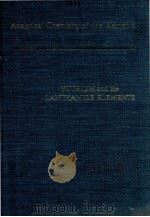
- ANALYTICAL CHEMISTRY OF YTTRIUM AND THE LANTHANIDE ELEMENTS
- 1970 ANN ARBOR-HUMPHREY SCIENCE PUBLISHERS ANN ARBOR·LONDON
-
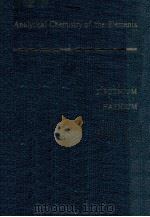
- ANALYTICAL CHEMISTRY OF THE ELEMENTS AIRCONIUM HAFNIUM
- 1969 ANN ARBOR-HUMPHREY SCIENCE PUBLISHERS
-
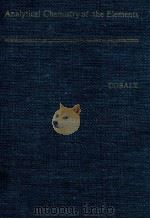
- ANALYTICAL CHEMISTRY OF THE ELEMENTS COBALT
- 1969 ANN ARBOR-HUMPHREY SCIENCE PUBLISHERS ANN ARBOR·LONDON
-
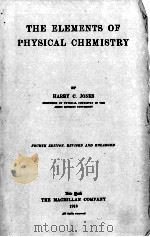
- THE ELEMENTS OF PHYSICAL CHEMISTRY FOURTH EDITION
- 1918 THE MACMILLAN COMPANY
-
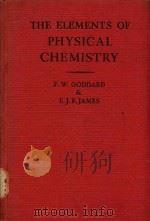
- THE ELEMENTS OF PHYSICAL CHEMISTRY
- 1961 LONGMANS
-
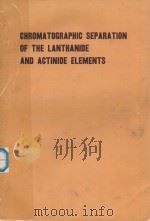
- BIBLIOGRAPHICAL SERIES NO.11 CHROMATOGRAPHIC SEPARATION OF THE LANTHANIDE AND ACTINIDE ELEMENTS
- 1964 INTERNATIONAL ATOMIC ENERGY AGENCYH
-
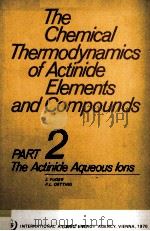
- THE CHEMICAL THERMODYNAMICS OF ACTINIDE ELEMENTS AND COMPOUNDS PART 2 THE ACTINIDE AQUEOUS IONS
- 1976 INTERNATIONAL ATOMIC ENERGY AGENCY
-
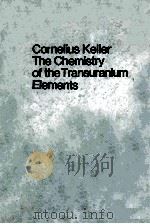
- CORNELIUS KELLER THE CHEMISTRY OF THE TRANSURANIUM ELEMENTS VOLUME 3
- 1971 VERLAG CHEMIE GMBH
提示:百度云已更名为百度网盘(百度盘),天翼云盘、微盘下载地址……暂未提供。➥ PDF文字可复制化或转WORD
